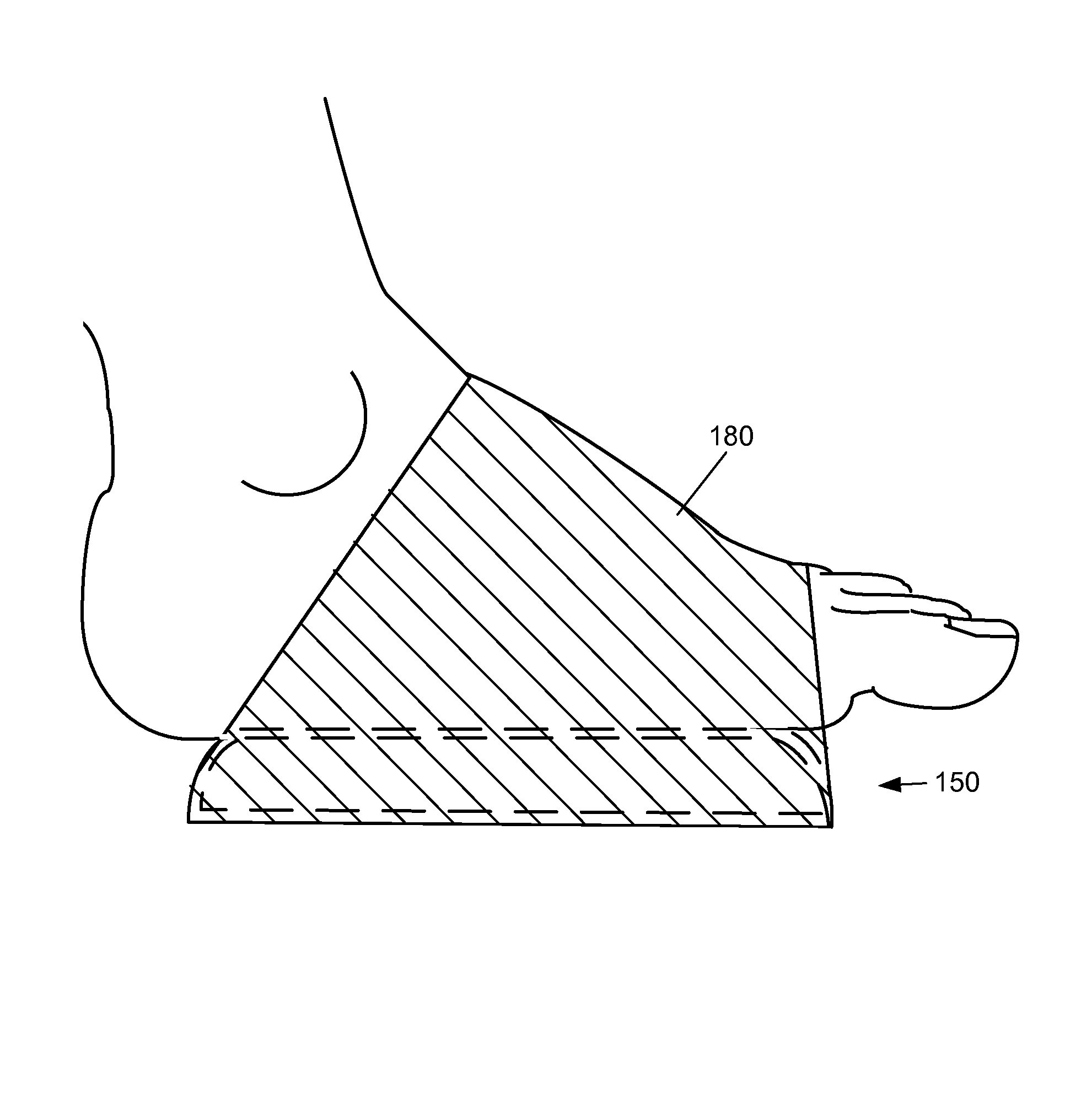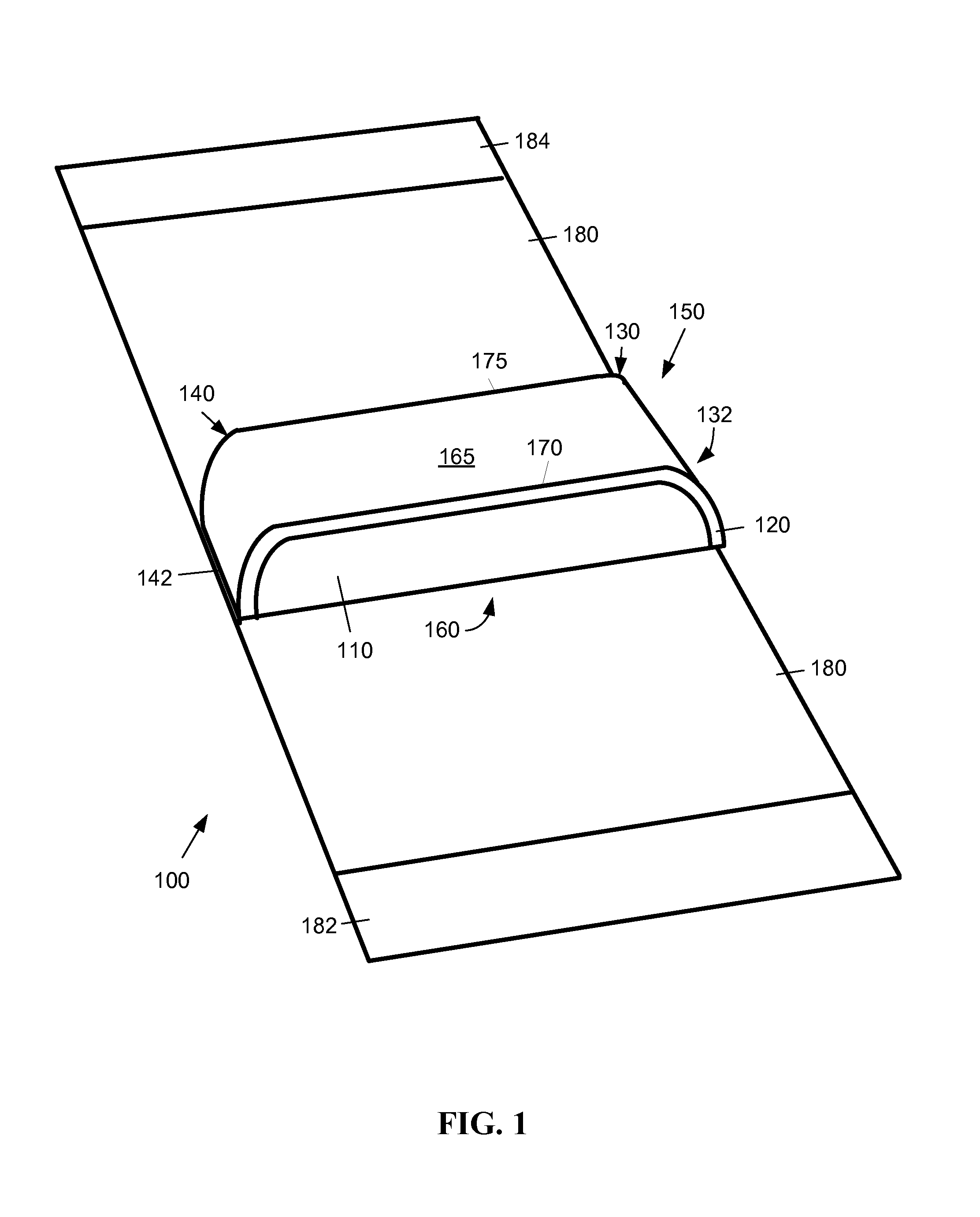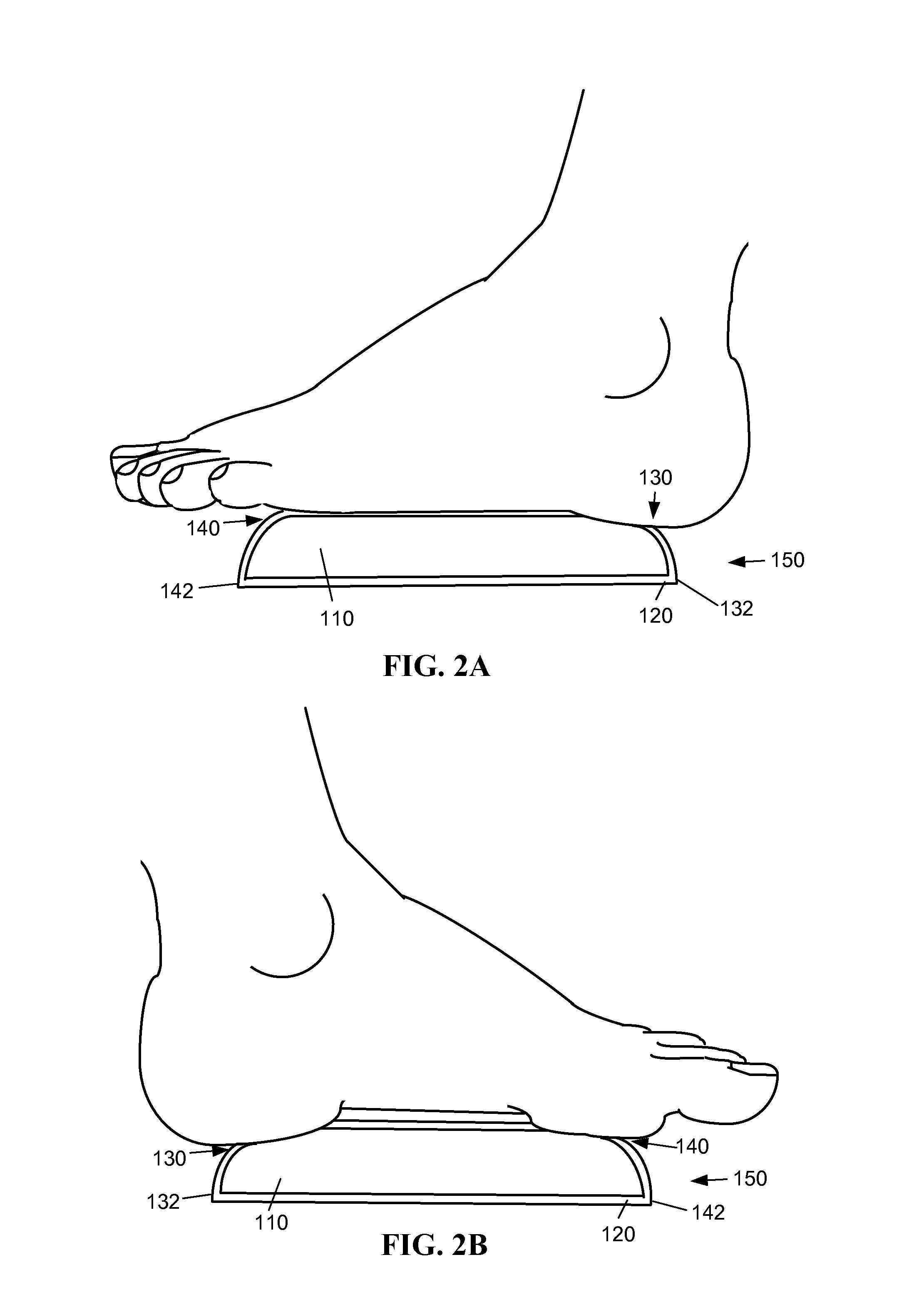Apparatus for plantar fasciitis treatment and method for making same
a plantar fasciitis and apparatus technology, applied in the field of orthopaedic devices, can solve the problems of reducing the healing process, reducing the healing effect, dull pain and/or stiffness at the bottom of the heel, etc., and achieves the effect of effective treatment and preventing plantar fasciitis, facilitating use, and encouraging complian
- Summary
- Abstract
- Description
- Claims
- Application Information
AI Technical Summary
Benefits of technology
Problems solved by technology
Method used
Image
Examples
first embodiment
[0041]Under a first embodiment, as shown by FIG. 1, the PFAS device 100 includes a block 150 that has no moving parts, and the block 150 is generally placed against a foot, between the metatarsal head and the calcaneus of the wearer. The block 150 has a top surface 165 with a first curved top edge 130 and a second curved top edge 140. The gentle curves on the first curved top edge 130 and the second curved top edge 140 may promote a gradual, gentle compression that makes the PFAS device 100 comfortable to wear for long periods of time, thereby increasing the effectiveness of the PFAS device 100. The first curved top edge 130 and the second curved top edge 140 are shaped to provide a larger area of contact against the attachment point of the plantar fasciitis than would be provided by, for example, a block 150 with square edges. Similarly, the first top curved edge 130 and the second curved top edge 140 may be shaped to provide adequate pressure upon the plantar fasciitis attachment ...
fourth embodiment
[0056]Additional embodiments are also possible. For example, under a fourth embodiment, as shown by FIG. 5, a strap (not shown) may pass through a slot or aperture 590 in a block 550, rather than attaching to the outside the block 550 and / or a fabric strip 520 partially or completely wrapping a solid core 510. The strap may be able to freely slide through the slot 560, held in place substantially by friction between the strap and the block 550, and / or the weight of the wearer compressing the slot 590 to hold the strap substantially in place. However, there is no objection to using means to prevent the strap from sliding in the slot 590, for example, using protrusions such as pins or pegs within the slot 590 passing through holes in the strap to hold the strap in place. Of course, other similar means may be used by persons having ordinary skill in the art to hold the strap substantially in place within the slot 590.
[0057]Under the fourth embodiment, the base of the block 550 may incl...
PUM
 Login to View More
Login to View More Abstract
Description
Claims
Application Information
 Login to View More
Login to View More - R&D
- Intellectual Property
- Life Sciences
- Materials
- Tech Scout
- Unparalleled Data Quality
- Higher Quality Content
- 60% Fewer Hallucinations
Browse by: Latest US Patents, China's latest patents, Technical Efficacy Thesaurus, Application Domain, Technology Topic, Popular Technical Reports.
© 2025 PatSnap. All rights reserved.Legal|Privacy policy|Modern Slavery Act Transparency Statement|Sitemap|About US| Contact US: help@patsnap.com



